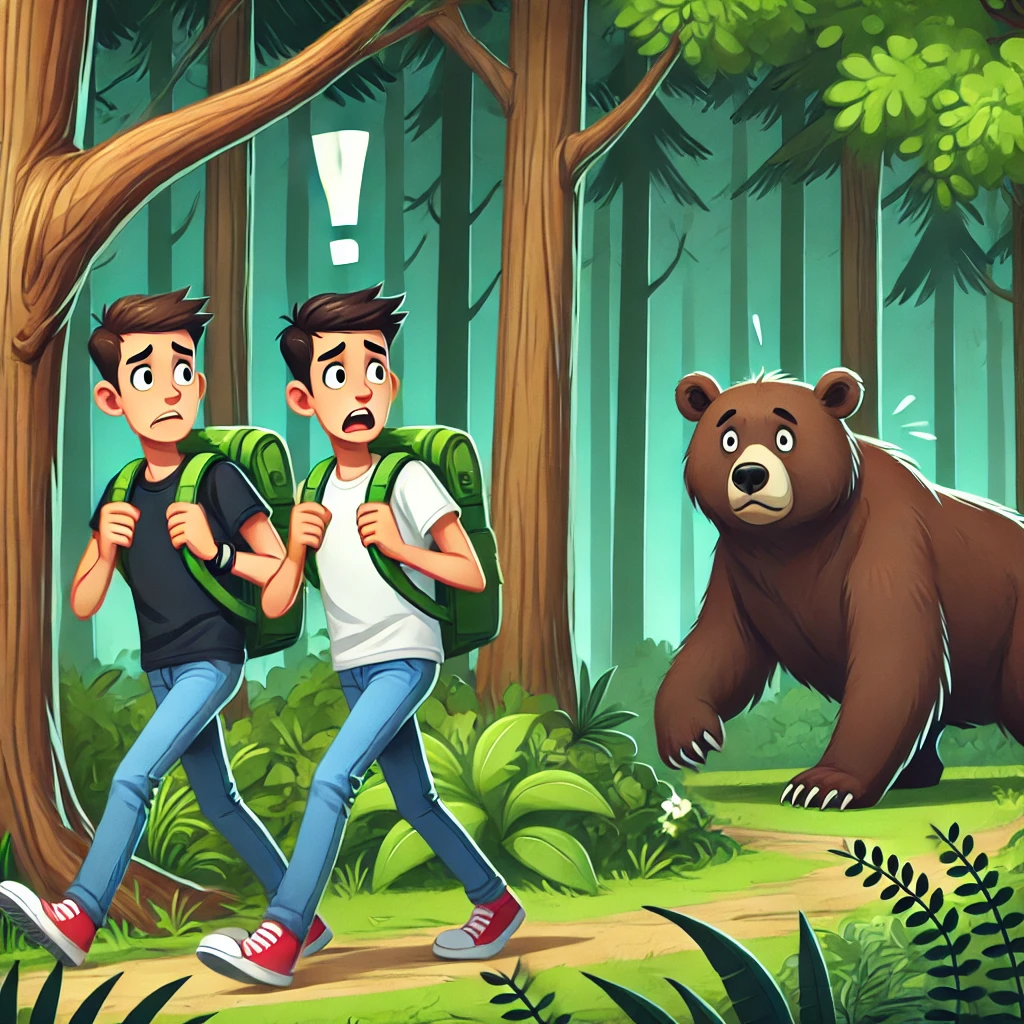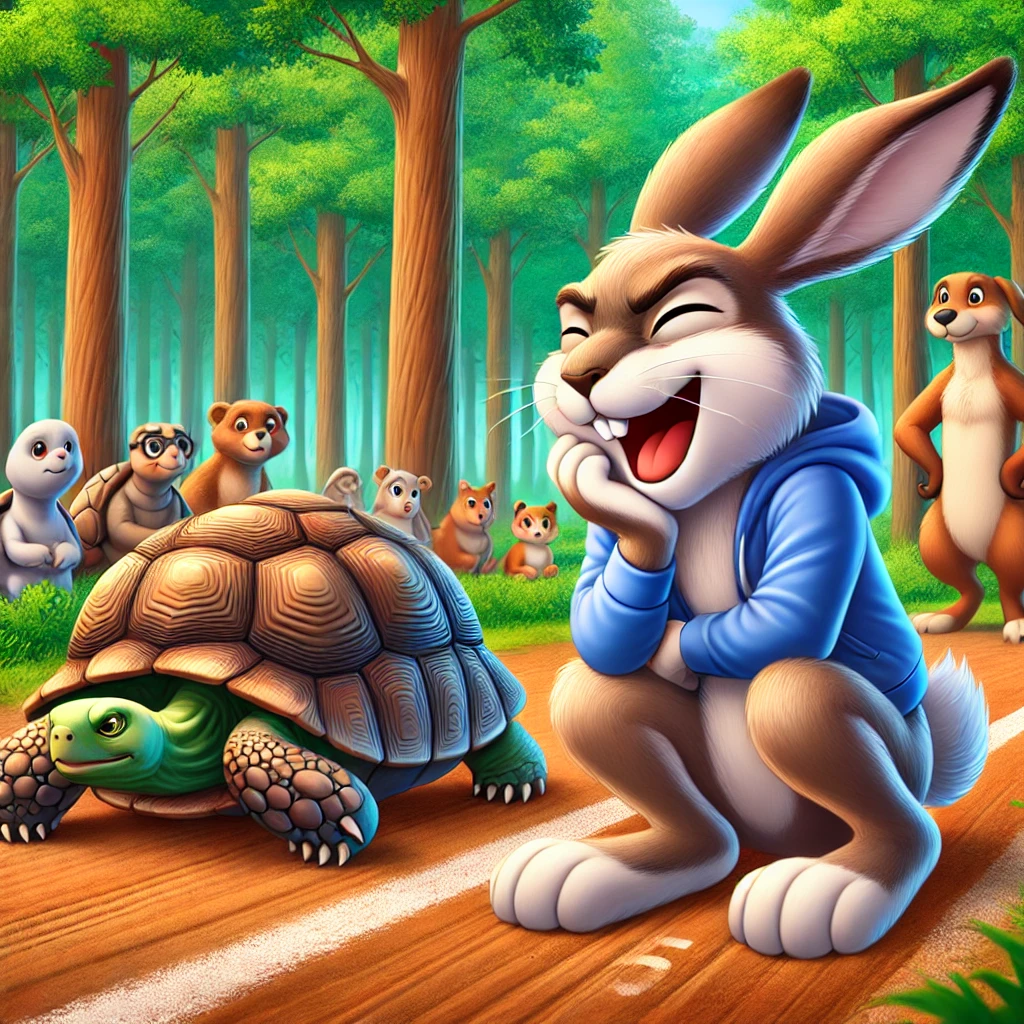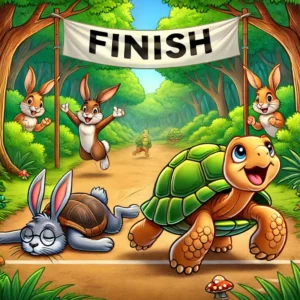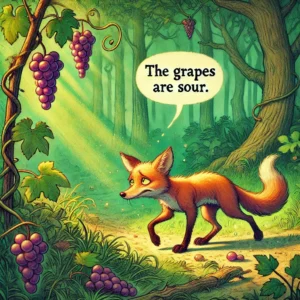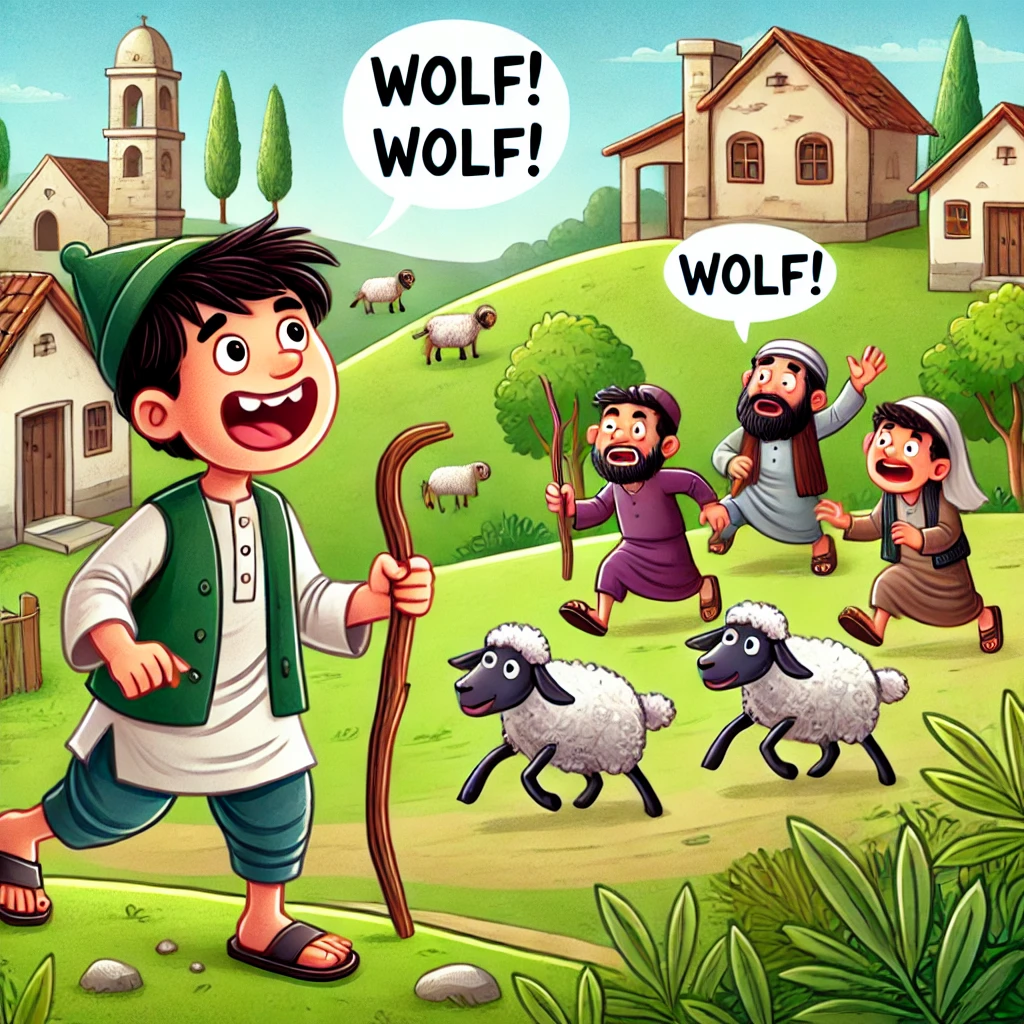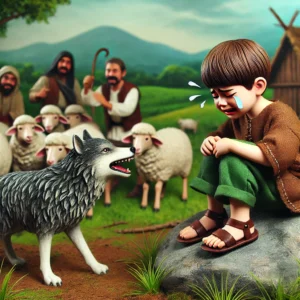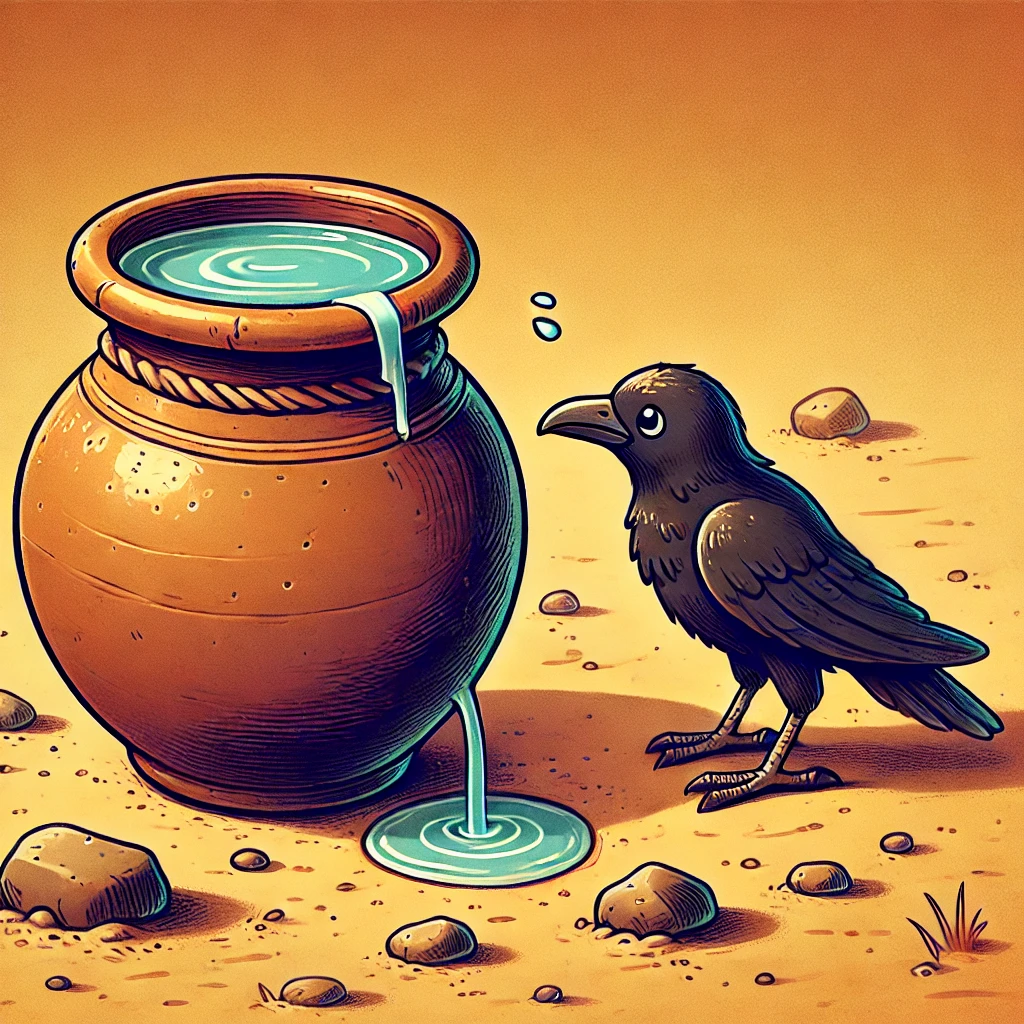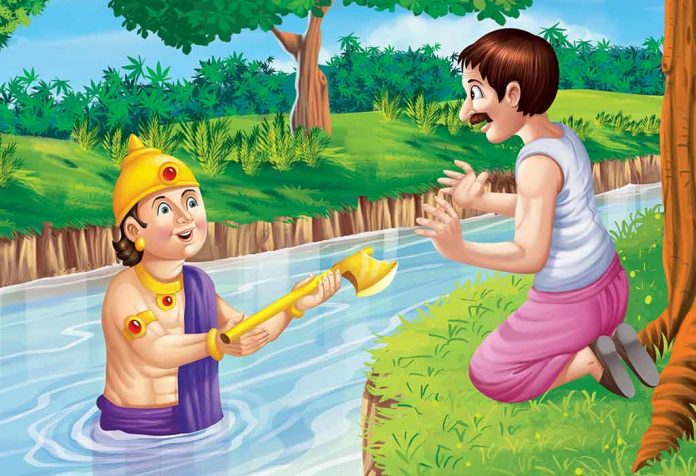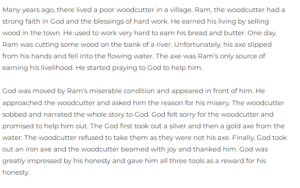Once upon a time, two best friends, Sam and John, lived in a small village. They always did everything together. One day, they decided to go on a journey through the forest.
Before they left, an old man in the village warned them, “The forest is big and dangerous. Wild animals live there. Always stay together and help each other.”
“Don’t worry! We are best friends. We will always stay together,” Sam and John promised.
Walking Through the Forest
The two friends entered the deep forest. The trees were tall, and the sunlight barely touched the ground. Birds were chirping, and a cool breeze was blowing.
As they walked, they talked and laughed. “This forest is beautiful,” said John. “Yes! But we must be careful,” replied Sam.
Suddenly, they heard a loud rustling sound. CRACK! Something big was moving behind the bushes. Their hearts started beating fast.
A Big Bear Appears!
A huge brown bear came out from the bushes! It had big sharp claws and strong teeth. It growled loudly, “Grrrrrr!”
Sam and John were very scared. “Oh no! What should we do?” Sam whispered.
Before John could answer, Sam quickly ran to a nearby tree. He climbed up fast and hid between the branches. He did not think about John at all.
John, however, could not climb the tree. He was stuck on the ground, alone. “Sam! Help me!” he shouted, but Sam did not come down.
John remembered something his grandfather had told him: “Bears do not attack dead people.”
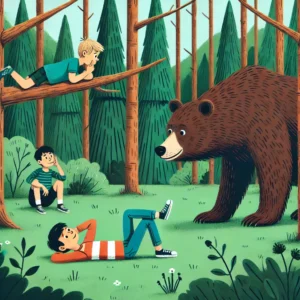
The Smart Idea
John quickly lay down on the ground. He closed his eyes and held his breath. He stayed very still, pretending to be dead.
The big bear came closer. It sniffed John’s face. “Sniff, sniff!” It moved its nose near his ear.
John did not move. He stayed as still as a rock. After a few moments, the bear lost interest and walked away. It disappeared into the forest.
The Lesson of True Friendship
When the bear was gone, Sam climbed down from the tree. “John, are you okay?” he asked.
John slowly stood up and looked at his friend. “I am fine,” he said.
Then he asked, “Sam, why did you not help me? I thought we were best friends.”
Sam felt ashamed. “I was scared. I did not know what to do,” he said.
John smiled and said, “Do you know what the bear told me?”
Sam was surprised. “What? The bear spoke to you?”
John nodded and said, “Yes. The bear told me: ‘A true friend will never leave you in danger.’”
Sam understood his mistake. He felt sorry and promised never to be selfish again.
They walked back home together, but their friendship was never the same again.
Moral of the Story:
- A true friend will never leave you in danger.
- Selfish people are not real friends.
- Hard times show who your real friends are.
- Think before trusting someone as your best friend.
This story teaches us that real friends always stand by each other in difficult times. A selfish friend will leave you when you need help the most.
